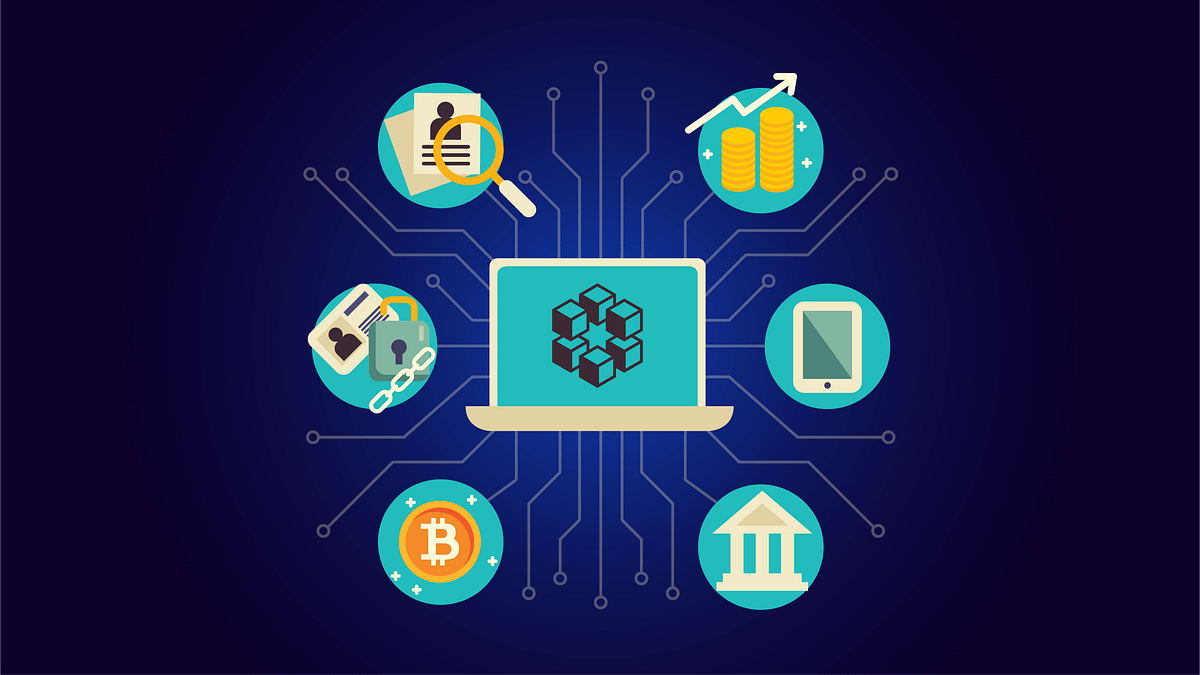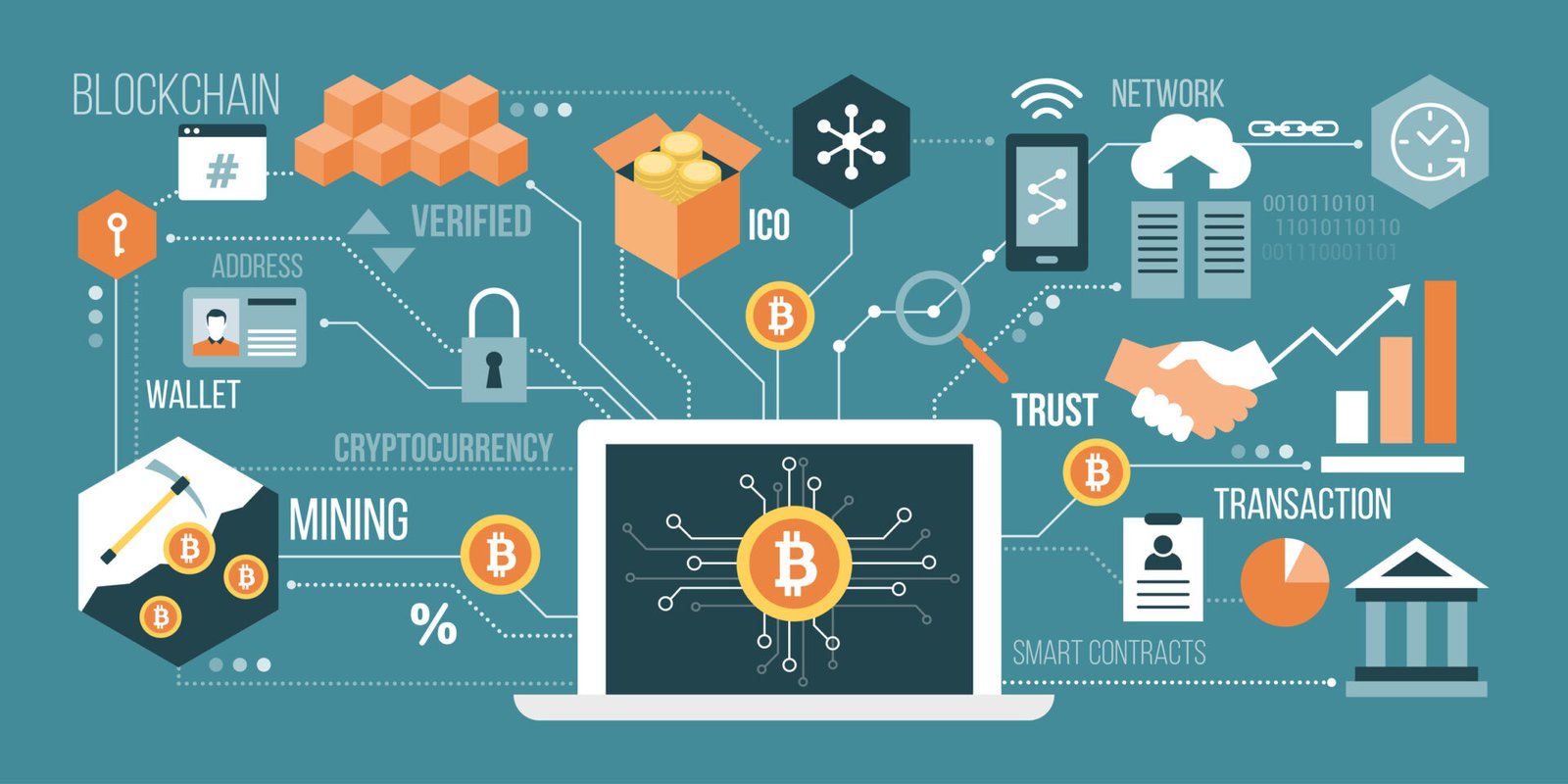The Blockchain Application Development Cost has become a critical consideration for businesses exploring decentralized solutions in 2025. As blockchain technology continues to revolutionize industries from finance to supply chain management, understanding the financial investment required for blockchain projects is essential for strategic planning. Whether you’re a startup looking to build your first decentralized application or an enterprise seeking to integrate blockchain into existing systems, the cost structure can vary dramatically based on multiple factors.
Blockchain development represents a significant technological investment that requires careful budget planning and realistic expectations. The complexity of blockchain systems, combined with the specialized skills required for development, creates a unique cost landscape that differs substantially from traditional software development. Understanding these cost factors upfront can help you make informed decisions about your blockchain project and avoid unexpected expenses during development.
Understanding Blockchain Development Fundamentals
Before diving into specific cost breakdowns, it’s crucial to understand what Blockchain Application Development Cost entails. Blockchain development involves creating decentralized applications (dApps) that operate on distributed ledger networks. These applications require specialized programming languages, consensus mechanisms, and security protocols that traditional software development doesn’t typically address.
The development process encompasses several key components including smart contract creation, user interface design, backend infrastructure, security implementation, and testing procedures. Each component contributes to the overall project cost and requires specific expertise that can significantly impact your budget.
Blockchain platforms like Ethereum, Hyperledger, and Binance Smart Chain each have unique development requirements and associated costs. The choice of platform directly influences development complexity, transaction fees, and long-term maintenance expenses. Understanding these platform-specific requirements is essential for accurate cost estimation.
Key Factors Affecting Blockchain Application Development Cost
Project Complexity and Scope
The complexity of your Blockchain Application Development Cost serves as the primary cost driver. Simple applications with basic functionality typically require fewer resources and development time compared to complex enterprise solutions. Factors that increase complexity include multi-chain integration, advanced security features, regulatory compliance requirements, and integration with existing enterprise systems.
Custom blockchain solutions require significantly more investment than applications built on existing platforms. Creating a new blockchain from scratch involves consensus algorithm development, network architecture design, and extensive testing procedures that can multiply development costs several times over. The scope of functionality also impacts costs substantially. Applications requiring real-time data processing, complex business logic, or integration with multiple third-party services will require more development resources and specialized expertise.
Development Team Structure and Location
The composition and location of your development team significantly influence project costs. Blockchain developers command premium rates due to their specialized skills and high market demand. Senior blockchain developers in North America and Europe typically charge between $100-$200 per hour, while developers in Eastern Europe and Asia may charge $40-$100 per hour. eam size requirements vary based on project complexity. A typical blockchain development team includes blockchain developers, smart contract specialists, UI/UX designers, project managers, and quality assurance engineers.
Larger projects may require additional specialists such as cryptography experts, DevOps engineers, and security auditors. The choice between in-house development, outsourcing, or hybrid models affects both costs and project timelines. In-house development provides better control but requires significant investment in recruitment and training. Outsourcing can reduce costs but may introduce communication challenges and quality control issues.
Technology Stack and Platform Selection
Different blockchain platforms have varying development costs and requirements. Ethereum development typically requires higher gas fees and more complex optimization compared to newer platforms like Polygon or Solana. The choice of programming languages, development frameworks, and tools also impacts overall costs. Smart contract development represents a significant cost component, especially for complex applications.
Smart contracts require extensive testing and security auditing due to their immutable nature and potential financial implications. Security audits alone can cost between $5,000-$50,000 depending on contract complexity. Integration requirements with existing systems, APIs, and databases add additional layers of complexity and cost. Legacy system integration often requires custom middleware development and extensive testing to ensure compatibility and security.
Blockchain Application Development Cost Breakdown

Simple Blockchain Applications ($25,000 – $80,000)
Simple Blockchain Application Development Cost include basic cryptocurrency wallets, simple smart contracts, and proof-of-concept projects. These applications typically feature limited functionality, basic user interfaces, and minimal integration requirements. Development timelines for simple applications range from 2-4 months with a small team of 2-4 developers.
The cost breakdown includes frontend development (30%), backend development (40%), testing (20%), and project management (10%). Simple applications often utilize existing blockchain platforms and pre-built components to reduce development time and costs. However, even simple applications require security considerations and proper testing procedures to ensure reliability and user safety.
Medium Complexity Applications ($80,000 – $300,000)
Medium complexity blockchain applications include decentralized exchanges, NFT marketplaces, and supply chain tracking systems. These applications require advanced smart contract functionality, database integration, and more sophisticated user interfaces. Development timelines typically range from 4-8 months with teams of 5-8 developers. The cost distribution includes smart contract development (35%), frontend development (25%), backend infrastructure (25%), testing and security (10%).
Project management (5%). Medium complexity applications often require custom development work, third-party integrations, and specialized features that increase both development time and costs. These projects may also require multiple rounds of testing and security audits.
Complex Enterprise Applications ($300,000 – $1,000,000+)
Complex blockchain applications include enterprise-grade solutions, multi-chain platforms, and applications requiring extensive regulatory compliance. These projects involve sophisticated architecture, advanced security measures, and integration with multiple enterprise systems. Development timelines can extend from 8-18 months with large teams of 10-20+ developers and specialists. The cost breakdown includes architecture design (20%), smart contract development (25%).
Frontend development (20%), backend infrastructure (15%), security and compliance (15%), and project management (5%). Enterprise applications require extensive documentation, compliance verification, security audits, and ongoing support systems. These requirements significantly increase development costs but are essential for enterprise adoption and regulatory compliance.
Regional Cost Variations in Blockchain Development
North America and Western Europe
North America and Western Europe represent the highest-cost regions for blockchain development. Senior developers in these regions typically charge $100-$200 per hour, with project costs often exceeding global averages by 50-100%. The higher costs in these regions reflect several factors including higher living costs, strong developer demand, and mature blockchain ecosystems.
However, these regions also offer advantages such as strong intellectual property protection, established legal frameworks, and access to experienced development talent. Companies in these regions often benefit from proximity to major blockchain hubs, access to venture capital, and established networks of blockchain professionals. These advantages can justify higher development costs for complex projects requiring specialized expertise.
Eastern Europe and Asia
Eastern Europe and Asia offer more cost-effective blockchain development options with hourly rates typically ranging from $40-$100 per hour. Countries like Ukraine, Poland, India, and Vietnam have emerged as popular outsourcing destinations for blockchain projects. These regions offer several advantages including strong technical education systems, growing blockchain expertise, and favorable time zones for international collaboration.
The cost savings can be substantial, with total project costs often 30-60% lower than North American or Western European alternatives. However, companies should consider factors such as communication challenges, cultural differences, and varying regulatory environments when selecting development partners in these regions. Proper due diligence and clear project specifications are essential for successful international collaboration.
Also Read: SidraChain: A New Era of Decentralized Blockchain Solutions
Cost Optimization Strategies
Minimum Viable Product (MVP) Approach
Implementing an MVP approach can significantly reduce initial blockchain application development costs while allowing for iterative improvement based on user feedback. This strategy involves developing core functionality first and adding advanced features in subsequent development phases. The MVP approach helps validate market demand and technical assumptions before committing to full-scale development.
This can prevent costly mistakes and ensure that development resources are focused on features that provide real value to users. Budget allocation for MVP development typically focuses 70% on core functionality, 20% on user interface, and 10% on testing and deployment. This approach allows for rapid market entry while maintaining flexibility for future enhancements.
Leveraging Existing Frameworks and Tools
Utilizing existing blockchain frameworks, development tools, and pre-built components can significantly reduce development time and costs. Platforms like Truffle, Hardhat, and OpenZeppelin provide tested components that can accelerate development while maintaining security standards.
Framework selection should balance development speed with customization requirements. While frameworks can reduce initial development costs, they may limit customization options and create dependencies that affect long-term project flexibility.
The cost savings from using existing frameworks can range from 20-40% of total development costs, depending on project requirements and framework compatibility. However, developers must ensure that chosen frameworks meet security and performance requirements.
Strategic Outsourcing and Team Optimization
Strategic outsourcing can help optimize blockchain development costs while maintaining quality standards. This approach involves identifying project components that can be effectively outsourced while retaining critical functions in-house. Effective outsourcing strategies include clearly defined project specifications, regular communication protocols, and quality assurance procedures. Companies should also consider factors such as time zone differences.
Cultural compatibility, and legal frameworks when selecting outsourcing partners. Team optimization involves right-sizing development teams based on project requirements and timelines. Over-staffing can increase costs unnecessarily, while under-staffing can lead to delays and quality issues. Regular assessment of team composition and workload distribution helps maintain optimal cost-efficiency.
Ongoing Costs and Maintenance
Network Transaction Fees
Blockchain Application Development Cost incur ongoing transaction fees that vary based on network congestion and platform selection. Ethereum applications may experience high gas fees during network congestion, while newer platforms like Polygon offer lower transaction costs. Transaction fee planning should consider both current costs and potential future increases due to network adoption and congestion.
Applications requiring frequent transactions may benefit from layer-2 solutions or alternative blockchain platforms with lower fees. Budgeting for transaction fees typically requires 10-20% of annual operational costs, depending on application usage patterns and chosen blockchain platform. Smart contract optimization can help reduce gas consumption and associated costs.
Security Audits and Updates
Regular security audits are essential for Blockchain Application Development Cost especially those handling financial transactions or sensitive data. Security audits typically cost $5,000-$50,000 depending on application complexity and audit scope. Security maintenance includes monitoring for vulnerabilities, applying security patches, and updating dependencies.
These activities require ongoing investment in security expertise and monitoring tools. Annual security maintenance costs typically range from 5-15% of initial development costs, depending on application complexity and security requirements. Applications handling high-value transactions or sensitive data may require more frequent audits and higher security investments.
Platform Updates and Compliance
Blockchain platforms regularly release updates that may require application modifications to maintain compatibility and security. These updates can introduce new features, security improvements, or breaking changes that require development work. Compliance requirements may change over time, requiring application updates to maintain regulatory compliance.
This is particularly important for applications in regulated industries such as finance, healthcare, and supply chain management. Budget allocation for platform updates and compliance should account for 10-20% of annual maintenance costs. Applications operating in multiple jurisdictions may require higher compliance investments due to varying regulatory requirements.
Cost Comparison: In-House vs. Outsourced Development

In-House Development Advantages and Costs
In-house blockchain development provides maximum control over project direction, quality standards, and intellectual property protection. Companies can build internal expertise and maintain direct oversight of development processes. However, in-house development requires significant investment in recruitment, training, and infrastructure.
Hiring experienced blockchain developers can be challenging and expensive, with annual salaries often exceeding $120,000-$180,000 for senior developers. The total cost of in-house development includes salaries, benefits, equipment, training, and infrastructure costs. While hourly rates may appear lower, the total investment including overhead and support costs often exceeds outsourced alternatives.
Outsourced Development Considerations
Outsourced blockchain development can provide access to specialized expertise and reduce overall project costs. Established development companies offer proven processes, experienced teams, and quality assurance procedures. The selection of outsourcing partners requires careful evaluation of technical capabilities, project portfolio, and quality standards.
Companies should request detailed proposals, check references, and establish clear communication protocols. Cost savings from outsourcing can range from 20-50% of total development costs, depending on project complexity and chosen development partner. However, companies should factor in costs for project management, quality assurance, and potential communication challenges.
ROI Considerations and Budget Planning
Calculating Expected Return on Investment
Blockchain application development requires careful ROI analysis to justify the investment and guide budget allocation. ROI calculations should consider both direct revenue opportunities and indirect benefits such as operational efficiency improvements. Key ROI factors include market size, competitive advantages, operational cost savings, and revenue generation potential.
Blockchain Application Development Cost provide benefits such as reduced transaction costs, improved transparency, and enhanced security that translate into quantifiable value. ROI timelines for blockchain applications typically range from 1-3 years, depending on market adoption rates and monetization strategies. Companies should establish clear success metrics and monitoring procedures to track ROI achievement.
Budget Planning and Risk Management
Effective budget planning for blockchain development includes contingency allocation for scope changes, technical challenges, and market volatility. Industry best practices suggest allocating 20-30% contingency budget for blockchain projects. Risk management strategies include phased development approaches, regular milestone reviews, and flexibility for scope adjustments. Companies should also consider market risks,
regulatory changes, and technology evolution in budget planning. Budget monitoring and control procedures help ensure projects stay within financial constraints while maintaining quality standards. Regular financial reviews and milestone assessments enable proactive budget management and risk mitigation.
Future Trends Affecting Development Costs
Emerging Technologies and Platforms
New blockchain platforms and technologies continue to emerge, potentially affecting development costs and requirements. Layer-2 solutions, interoperability protocols, and quantum-resistant cryptography may influence future development approaches. The maturation of blockchain development tools and frameworks is expected to reduce development costs over time.
Improved developer tools, better documentation, and standardized practices can accelerate development and reduce specialized expertise requirements. Integration with emerging technologies such as artificial intelligence, Internet of Things, and augmented reality may create new development opportunities and cost considerations. These integrations can enhance application functionality but may require additional expertise and development resources.
Market Maturation and Standardization
As blockchain technology matures, industry standards and best practices are becoming more established. This standardization can reduce development costs through improved tools, frameworks, and development processes. The growing pool of blockchain developers may help moderate cost increases due to improved supply and demand balance.
Educational programs and training initiatives are increasing the availability of qualified blockchain developers. Regulatory clarity and standardization may reduce compliance costs and development complexity. Clear regulatory frameworks can provide guidance for developers and reduce the need for extensive legal consultation during development.
Conclusion
Understanding blockchain application development cost is crucial for making informed decisions about blockchain projects in 2025. The investment required varies significantly based on project complexity, development team structure, and chosen technology stack. While simple applications may cost $25,000-$80,000, complex enterprise solutions can require investments exceeding $1,000,000.
Successful blockchain development requires careful planning, realistic budget allocation, and strategic decision-making regarding development approaches. Companies should consider factors such as ongoing maintenance costs, security requirements, and long-term scalability when planning their blockchain investments.
The blockchain development landscape continues to evolve, with new platforms, tools, and frameworks potentially reducing costs while improving capabilities. Organizations considering blockchain development should conduct thorough research, obtain detailed proposals from development partners, and establish clear success metrics for their projects.
Ready to start your blockchain development journey? Contact our experienced blockchain development team today to discuss your project requirements and receive a detailed cost estimate tailored to your specific needs. Our experts can help you navigate the complexities of blockchain application development cost planning and ensure your project success.
Frequently Asked Questions
How much does it cost to develop a simple blockchain application?
A simple blockchain application typically costs between $25,000 and $80,000 to develop. This includes basic functionality like cryptocurrency wallets, simple smart contracts, or proof-of-concept projects. The cost depends on the chosen platform, development team location, and specific features required. Simple applications usually take 2-4 months to develop with a small team of 2-4 developers.
What factors most significantly impact blockchain development costs?
The most significant factors affecting blockchain application development cost include project complexity, development team composition and location, technology stack selection, and integration requirements. Complex applications with advanced features, custom blockchain solutions, and enterprise-grade security can cost 5-10 times more than simple applications. The choice of development team (in-house vs. outsourced) and geographic location can also impact costs by 30-60%.
How do ongoing maintenance costs compare to initial development costs?
Ongoing maintenance costs for Blockchain Application Development Cost typically range from 15-25% of initial development costs annually. This includes security audits, platform updates, compliance monitoring, and bug fixes. Applications with high transaction volumes or complex functionality may have higher maintenance costs due to increased monitoring requirements and more frequent updates.
Is it more cost-effective to build in-house or outsource blockchain development?
The cost-effectiveness depends on project requirements, timeline, and company resources. Outsourcing can reduce total costs by 20-50% while providing access to specialized expertise. However, in-house development offers better control and may be more suitable for complex, long-term projects. Many companies adopt hybrid approaches, keeping core development in-house while outsourcing specialized components.
How can companies reduce blockchain application development costs?
Companies can reduce blockchain application development costs through several strategies: implementing an MVP approach to validate concepts before full development, leveraging existing frameworks and tools, choosing cost-effective blockchain platforms, optimizing team composition, and considering strategic outsourcing. These approaches can reduce costs by 20-40% while maintaining quality standards.


